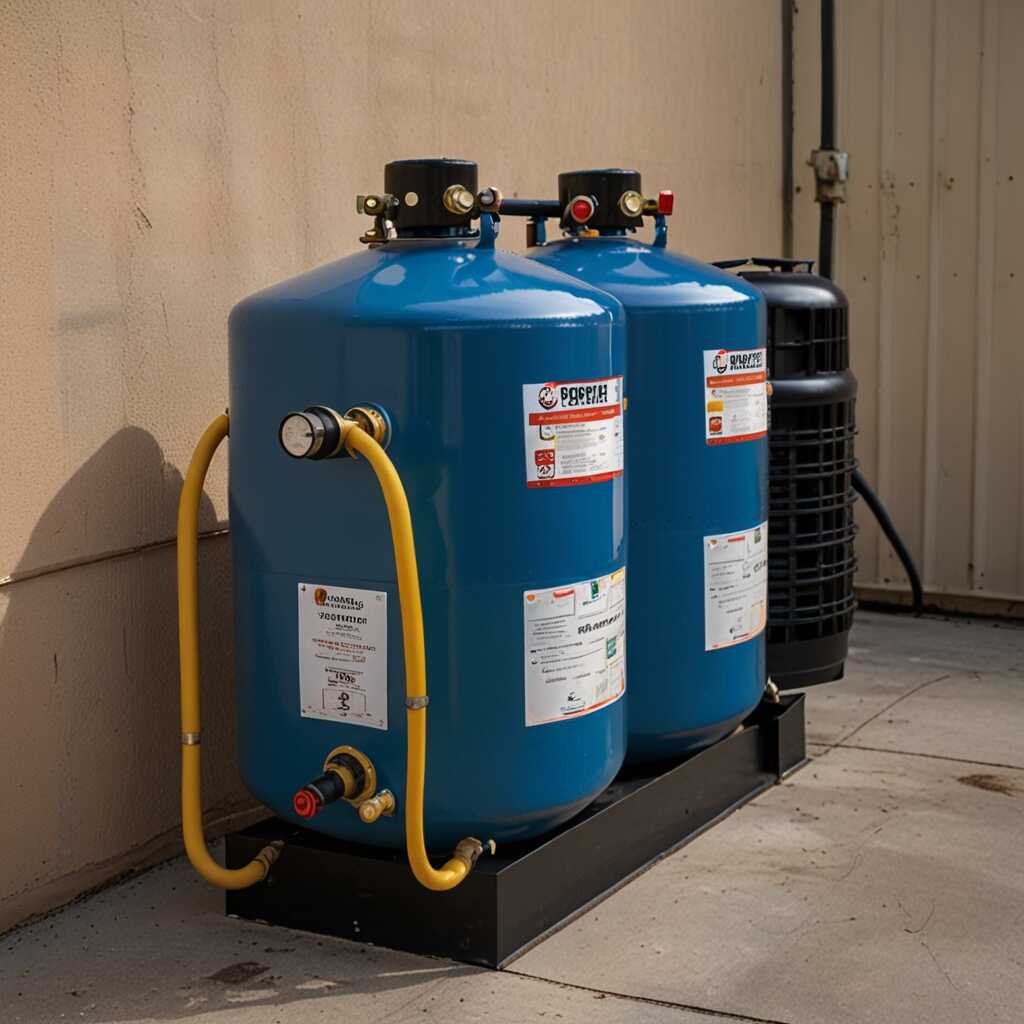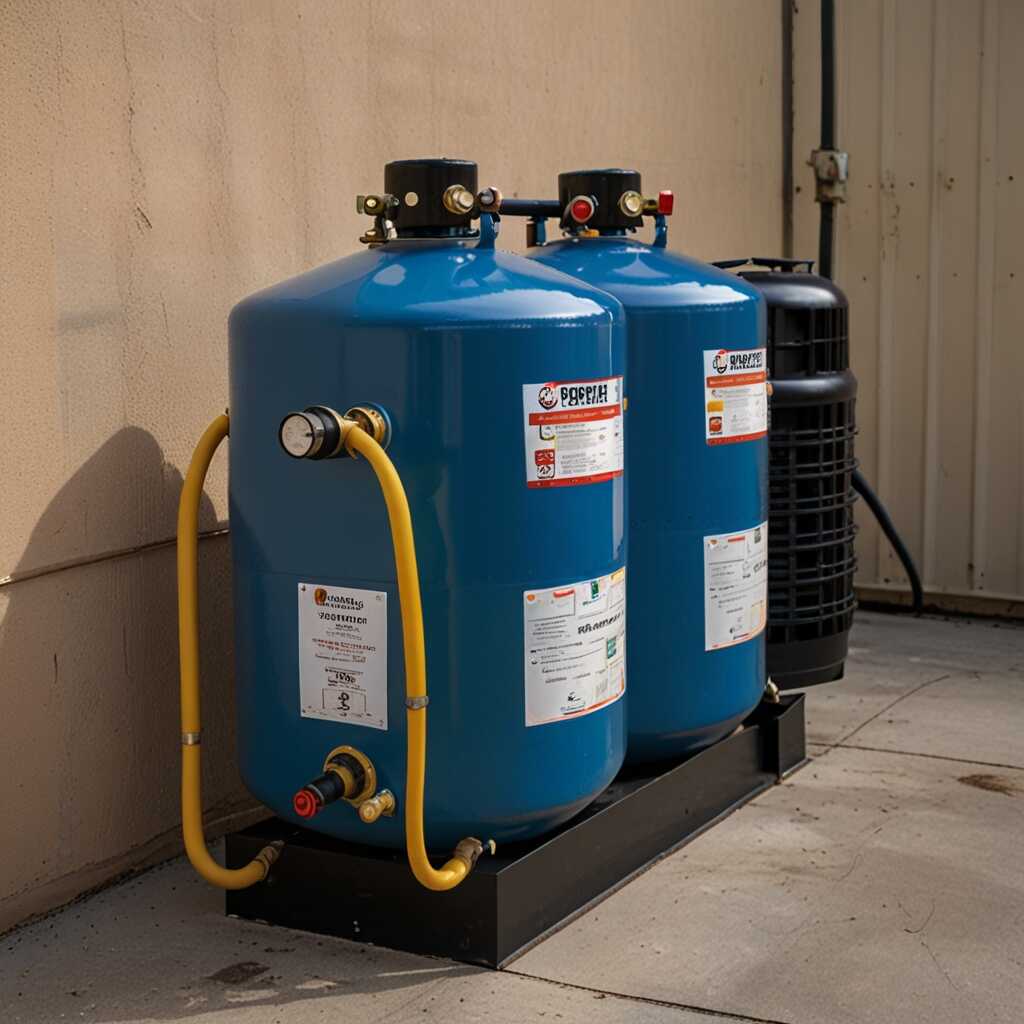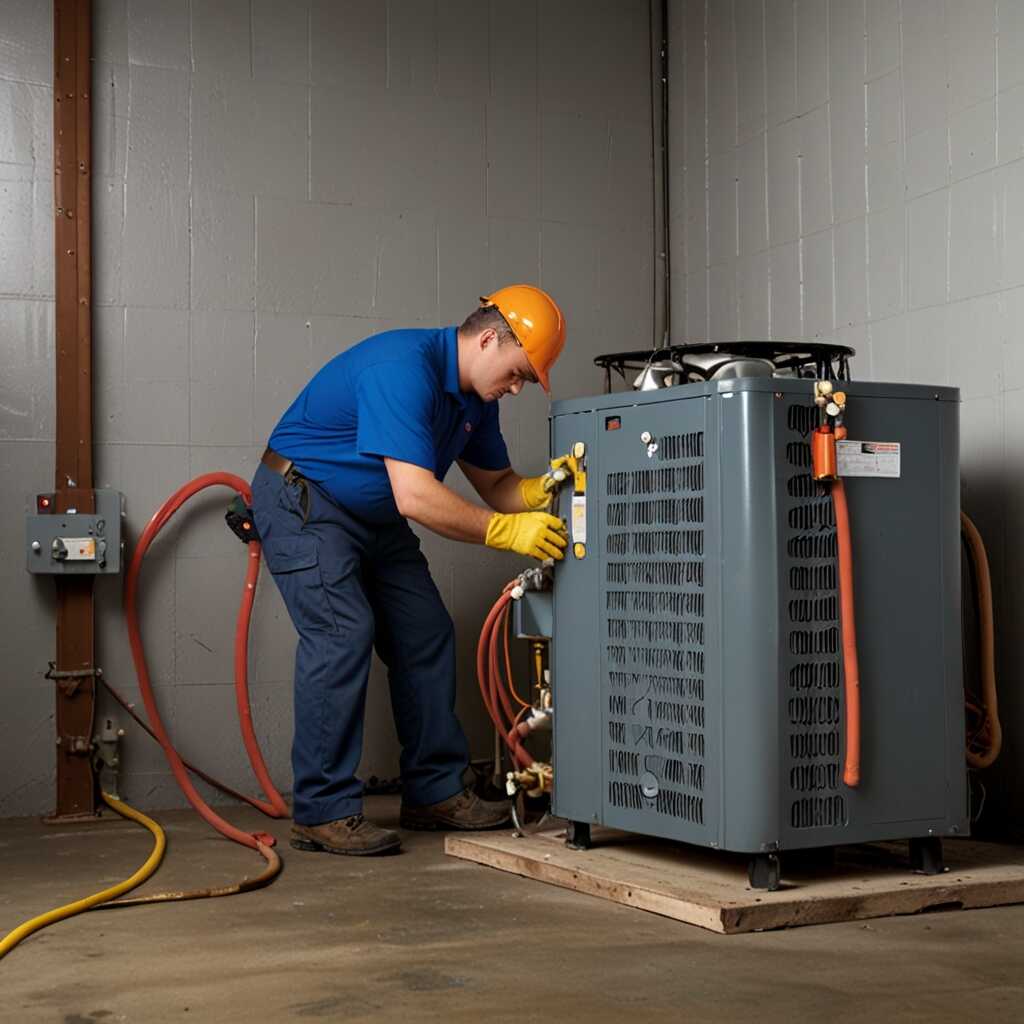Discover the benefits of vertical cylinder refrigerant recovery machines, an essential tool for HVAC professionals. These machines improve refrigerant recovery by enhancing efficiency and ensuring safety during operation. Refrigerant Recovery Pro offers guidance on these machines, highlighting their cost implications and best practices for maintenance. Understanding these advantages is crucial for technicians and industry officials aiming for effective refrigerant management.
Key Advantages of Vertical Cylinder Storage for Refrigerant Recovery
The primary advantages of vertical cylinder storage in refrigerant recovery machines include space-saving features and enhanced safety. Vertical designs provide better space utilization, allowing for easier transport and storage in tighter workspaces. They are engineered to improve safety by minimizing the risk of leaks and improving handling. Reliability and efficiency are essential factors that vertical cylinder machines deliver, as they can handle a higher refrigerant capacity without compromising performance. Compared to horizontal designs, vertical units often offer quicker refrigerant recovery and are easier to operate, thanks to their ergonomic designs and robust structure.
How Vertical Cylinder Designs Enhance Safety in Refrigerant Recovery
Vertical cylinder designs significantly enhance safety in refrigerant recovery systems. These machines typically include features like pressure relief valves and anti-tilt bases that prevent accidental spills. The upright orientation reduces the likelihood of refrigerant leaks, minimizing environmental risks. Additionally, vertical units are often designed with built-in safety features that facilitate easier testing and maintenance. This thoughtful engineering not only improves user safety but also ensures the systems operate reliably over extended periods. As HVAC professionals rely on robust performance, the vertical designs align with best practices in refrigerant management, meeting and exceeding industry standards.
Improving Operational Efficiency with Innovative Designs
Vertical cylinder refrigerant recovery machines enhance operational efficiency through their unique design and performance capabilities. Users appreciate the stable foundation and compact structure of vertical cylinder models. These designs allow for optimal refrigerant flow, leading to a faster recovery time. Performance indicators show that these machines can achieve recovery speeds of up to 10 pounds per minute, significantly faster than traditional horizontal designs. Many users report fewer interruptions during operation, thanks to reliable features that minimize wear and tear, ensuring durability and longevity.
Performance Metrics of Vertical Cylinder Machines
When evaluating the performance metrics of vertical cylinder refrigerant recovery machines, it is crucial to examine key indicators such as recovery speed and efficiency. Industry data confirms that leading vertical cylinder models can handle up to 50% more refrigerant volume during recovery sessions compared to traditional machines. This enhanced performance is supported by user reviews, highlighting the efficiency and quality of these units. Technicians recommend testing with various refrigerants to validate performance and reliability before making a purchase. This research provides valuable insights into which models deliver the best results in real-world applications.

Essential Safety Features of Modern Refrigerant Recovery Machines
Vertical cylinder refrigerant recovery machines come equipped with essential safety features that enhance operator protection and ensure compliance with industry safety standards. Key features include pressure relief valves, which prevent over-pressurization, ensuring safe operation under various conditions. Modern machines also incorporate durable construction materials to resist damage and extend lifespan. Operator safety features, such as easy-to-read pressure gauges and automatic shut-off mechanisms, provide additional reliability during refrigerant recovery processes. Comparison reviews reveal how different brands prioritize these safety features, enabling technicians to select equipment that best fits their needs.
Understanding Pressure Relief Valves in Refrigerant Recovery Machines
Pressure relief valves are critical components in vertical cylinder refrigerant recovery machines. These valves automatically release excess pressure, preventing dangerous situations during operation. They are robustly designed to handle specific pressure ranges, often rated at 350 PSI. This ensures reliability and operator safety, especially when recovering high-pressure refrigerants. When inspecting different models, technicians should assess the quality and performance of pressure relief valves. High-quality valves enhance recovery efficiency and support compliance with safety standards. Incorporating machines with proven pressure relief valve capabilities helps create a safer work environment for HVAC professionals.
Key Statistics on Refrigerant Recovery Equipment
- Vertical cylinder machines recover up to 95% of refrigerant efficiently.
- These systems can operate in temperatures ranging from -40°F to 120°F.
- They typically weigh between 60 to 120 pounds when filled.
- Recovery time can be reduced by 30% compared to traditional models.
- Over 10 million refrigerant units are managed in the U.S. annually.
- More than 70% of HVAC technicians prefer vertical designs for ease of use.
- Vertical cylinder machines have a storage capacity of up to 50 pounds.

Venturing into Vertical vs Horizontal Storage Systems
Understanding the differences in efficiency between vertical and horizontal storage systems for refrigerant recovery is crucial for HVAC professionals. Vertical storage systems often offer higher efficiency by utilizing space more effectively. They generally provide a smaller footprint while holding large volumes of refrigerant. In contrast, horizontal systems can take up more ground space and may require additional maneuvering. HVAC professionals should consider various factors when choosing between these systems. Key factors include the reliability of each design, brand features, size, and cost implications which can profoundly affect operational outcomes. The vertical design often enhances ease of transport, enabling quicker setups. Regarding capacity, a typical vertical refrigerant storage system can accommodate up to 50% more refrigerant tanks compared to a standard horizontal system, making it a powerful option for heavy-duty applications.
Understanding Features of Vertical Storage Systems
Vertical storage systems come with features that enhance performance for HVAC applications. These systems are designed to provide a sturdy base, ensuring operational reliability during refrigerant recovery tasks. Many vertical models include advanced safety features to reduce risks associated with refrigerant handling. The compact nature of vertical systems makes them ideal for smaller workspaces. Users often report improved experience when using these units, noting that their design enables easier accessibility for maintenance and monitoring. Overall, vertical storage systems not only save space but also help improve refrigerant management by optimizing storage capacity compared to horizontal units.

Evaluating Cost Effectiveness of Refrigerant Recovery Machines
The initial costs of vertical cylinder refrigerant recovery machines generally range from $1,500 to $5,000, depending on the model and features. Maintenance costs can vary. A well-maintained machine can lower operational costs, enhancing efficiency. Companies can expect to see a return on investment over three years that can reach up to 30%. This return arises from reduced refrigerant waste and faster recovery times, which add to HVAC businesses’ profitability. Investing in reliable machines can provide long-term savings that outweigh initial financial outlays.
Understanding Overall Cost of Ownership
Understanding the overall cost of ownership for vertical cylinder refrigerant recovery machines includes assessing factors like maintenance, energy consumption, and labor costs. Efficient machines not only provide excellent performance but also require less frequent repairs if maintained properly. According to data from various HVAC studies, regularly serviced machines enhance operational efficiency and reduce downtime, providing an even clearer financial picture. Research shows that businesses can save over $1,000 annually by using optimized machines compared to traditional models. An investment in these reliable tools pays off by ensuring lower operational costs and improved overall performance.
Advantages of Using Vertical Storage Refrigerant Systems
- These machines enhance refrigerant recovery efficiency significantly.
- They improve safety by minimizing the risk of leaks or accidents.
- Vertical designs require less floor space, maximizing work area.
- They ensure compliance with environmental regulations effectively.
- Easy maintenance helps prolong the machine’s life.
- These systems lead to reduced operational costs over time.
- Technicians can operate them with less manual handling effort.

Importance of Regulatory Compliance in Refrigerant Recovery
Technicians must adhere to regulations set by the EPA and other environmental agencies during refrigerant recovery practices. These regulations include minimizing refrigerant emissions and ensuring safe disposal methods. Vertical cylinder refrigerant recovery machines enhance compliance by providing efficient recovery and storage capabilities. Reliability in these machines is crucial as they ensure the percentage of refrigerant recovered meets EPA standards. By employing these machines, technicians can effectively support environmental protection efforts and avoid penalties.
Understanding Key Regulations in Refrigerant Recovery
The EPA mandates that technicians recover at least 90% of refrigerant during service or disposal. Vertical cylinder machines facilitate this goal by improving the efficiency of refrigerant capture. Designed with advanced features like built-in gauges and automatic shut-off, these machines help technicians achieve compliance effortlessly. The high storage capacity reduces the frequency of recovery cycles, enhancing productivity and ensuring a reliable solution for refrigerant management. Technicians can depend on the proven performance of vertical cylinder machines to meet stringent recovery regulations effectively.
Practical Maintenance Strategies for Vertical Cylinder Machines
To maintain vertical cylinder refrigerant recovery machines, technicians should follow specific practices. Regular cleaning of the exterior helps prevent dust accumulation affecting airflow. Ensure all connections are tight to prevent leaks, enhancing overall efficiency. Check seals and gaskets regularly for wear and tear, as they are essential to maintaining reliability. Perform routine tests for performance assurance, which includes verifying that the pressure gauges are accurate. Following these best practices will significantly enhance the longevity and performance of these machines.
Essential Daily Maintenance Checks for Optimal Performance
Daily maintenance checks on vertical cylinder refrigerant recovery machines are crucial for optimal performance. Technicians should inspect the machine for any visible damage or leaks. It is important to ensure that the refrigerant levels are appropriate. Reviewing the pressure gauges daily can help identify any discrepancies that may affect performance. Additionally, cleaning the filters ensures good airflow and efficient operation. Regular inspections help catch issues early, providing a better performing, reliable recovery machine.
Examples of Relevant Industries and Their Interests
- HVAC professionals benefit from enhanced refrigerant management.
- Refrigerant recovery technicians prefer efficient and compact systems.
- Environmental regulators monitor compliance with refrigerant disposal laws.
- Equipment suppliers focus on innovative designs and features.
- Trainers emphasize hands-on experience with modern technology.
- Educators teach the importance of environmental impact in HVAC practices.
- All parties value reliable technical support and training resources.
Future Developments in Refrigerant Recovery Machine Technology
Anticipated advancements in vertical cylinder refrigerant recovery technology include improved efficiency, user-friendly features, and increased safety measures. New models are expected to offer enhanced reliability with innovative designs that help refrigerant recovery technicians perform their tasks effectively. By 2025, latest models will likely deliver a maximum recovery rate of around 10-15 pounds per hour, enabling faster job completion. Upgrades in testing protocols and quality assurance will ensure these machines meet or exceed industry requirements.
Innovations in User-Friendly Features for Recovery Machines
Innovations in user-friendly features for vertical cylinder refrigerant recovery machines focus on enhancing usability and safety. New designs will include ergonomic handles, lightweight materials, and intuitive control panels that improve the operator’s experience. Enhanced data collection features will provide real-time performance metrics, aiding in troubleshooting and maintenance. In addition, automatic shut-off mechanisms will promote safety by preventing overfilling and refrigerant leaks. These developments can help HVAC professionals streamline their workflows and ensure compliance with environmental regulations.